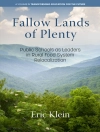A number of researchers have tried to characterise the anatomy and behavioural systems of early hominid and early modern human populations in an attempt to understand how we became what we are. Can archaeology, palaeo-anthropology and genetics tell us how and when human cultures developed the traits that make our societies different from those of our closest living relatives? In which cases are these differences substantial, and when do they simply reflect our definitions of culture, species, the image we have of their evolution or of ourselves? From Tools to Symbols, a collection of twenty-seven selected papers from a South African-French conference organised in honour of the well-known palaeo-anthropologist Phillip Tobias, provides a multidisciplinary overview of this field of study. It is based on collaborative research conducted in sub-Saharan Africa by South African, French, American and German scholars in the last twenty years, and represents an excellent synthesis of the palaeontological and archaeological evidence of the last five million years of human evolution.
Jadual kandungan
Acknowledgements
Profile of Professor Tobias
List of participants
Foreword
Justice Edwin Cameron
Address
Bernard Malauzat
Keynote address
Phillip V. Tobias
Searching for common ground in palaeoanthropology, archaeology and genetics
Francesco d’Errico and Lucinda R. Backwell
The history of a special relationship: prehistoric terminology and lithic technology between the French and South African research traditions
Nathan Schlanger
Essential attributes of any technologically competent animal
Charles K. Brain
Significant tools and signifying monkeys: the question of body techniques and elementary actions on matter among apes and early hominids
Frédéric Joulian
Tools and brains: which came first?
Phillip V. Tobias
Environmental changes and hominid evolution: what the vegetation tells us
Marion K. Bamford
Implications of the presence of African ape-like teeth in the Miocene of Kenya
Martin Pickford and Brigitte Senut
Dawn of hominids: understanding the ape-hominid dichotomy
Brigitte Senut
The impact of new excavations from the Cradle of Humankind on our understanding of the evolution of hominins and their cultures
Lee R. Berger
Stone Age signatures in northernmost South Africa: early archaeology in the Mapungubwe National Park and vicinity
Kathleen Kuman, Ryan Gibbon, Helen Kempson, Geeske Langejans, Joel Le Baron, Luca Pollarolo and Morris Sutton
Vertebral column, bipedalism and freedom of the hands
Dominique Gommery
Characterising early Homo: cladistic, morphological and metrical analyses of the original Plio-Pleistocene specimens
Sandrine Prat
Early Homo, ‘robust’ australopithecines and stone tools at Kromdraai, South Africa
Francis Thackeray and José Braga
The origin of bone tool technology and the identification of early hominid cultural traditions
Lucinda Backwell and Francesco d’Errico
Contribution of genetics to the study of human origins
Himla Soodyall and Trefor Jenkins
An overview of the patterns of behavioural change in Africa and Eurasia during the Middle and Late Pleistocene
Nicholas J. Conard
From the tropics to the colder climates: contrasting faunal exploitation adaptations of modern humans and Neanderthals
Curtis W. Marean
New neighbours: interaction and image-making during the West European Middle to Upper Palaeolithic transition
David Lewis-Williams
Late Mousterian lithic technology: its implications for the pace of the emergence of behavioural modernity and the relationship between behavioural modernity and biological modernity
Marie Soressi
Exploring and quantifying technological differences between the MSA I, MSA II and Howieson’s Poort at Klasies River
Sarah Wurz
Stratigraphic integrity of the Middle Stone Age levels at Blombos Cave
Christopher Henshilwood
Testing and demonstrating the stratigraphic integrity of artefacts from MSA deposits at Blombos Cave, South Africa
Zenobia Jacobs
From tool to symbol: the behavioural context of intentionally marked ostrich eggshell from Diepkloof, Western Cape
John Parkington, Cedric Poggenpoel, Jean-Philippe Rigaud and Pierre-Jean Texier
Chronology of the Howieson’s Poort and Still Bay techno-complexes: assessment and new data from luminescence
Chantal Tribolo, Norbert Mercier and Hélène Valladas
Subsistence strategies in the Middle Stone Age at Sibudu Cave: the microscopic evidence from stone tool residues
Bonny S. Williamson
Speaking with beads: the evolutionary significance of personal ornaments
Marian Vanhaeren
Personal names index
Subject index
Mengenai Pengarang
Phillip V. Tobias was a South African palaeoanthropologist and Professor Emeritus at the University of the Witwatersrand in Johannesburg. He was best known for his work at South Africa’s hominid fossil sites.












